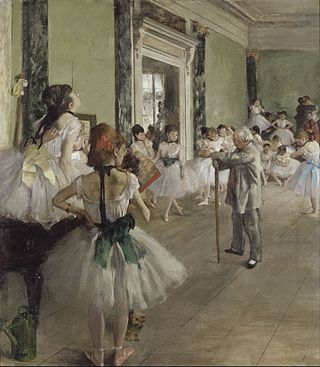Corporate titles or business titles are given to corporate officers to show what duties and responsibilities they have in the organization. Such titles are used by publicly and privately held for-profit corporations, cooperatives, non-profit organizations, educational institutions, partnerships, and sole proprietorships also confer corporate titles.
A chief executive officer (CEO), also known as a central executive officer, chief administrative officer (CAO) or chiefadministrator (CA) or just chief executive (CE), and as managing director (MD) in the UK, is one of a number of corporate executives charged with the management of an organization – especially an independent legal entity such as a company or nonprofit institution. CEOs find roles in a range of organizations, including public and private corporations, non-profit organizations and even some government organizations. The CEO of a corporation or company typically reports to the board of directors and is charged with maximizing the value of the business, which may include maximizing the share price, market share, revenues or another element. In the non-profit and government sector, CEOs typically aim at achieving outcomes related to the organization's mission, usually provided by legislation. CEOs are also frequently assigned the role of main manager of the organization and the highest-ranking officer in the C-suite.

A theatre director or stage director is a professional in the theatre field who oversees and orchestrates the mounting of a theatre production such as a play, opera, dance, drama, musical theatre performance, etc. by unifying various endeavors and aspects of production. The director's function is to ensure the quality and completeness of theatre production and to lead the members of the creative team into realizing their artistic vision for it. The director thereby collaborates with a team of creative individuals and other staff to coordinate research and work on all the aspects of the production which includes the Technical and the Performance aspects. The technical aspects include: stagecraft, costume design, theatrical properties (props), lighting design, set design, and sound design for the production. The performance aspects include: acting, dance, orchestra, chants, and stage combat.

Stage management is a broad field that is generally defined as the practice of organization and coordination of an event or theatrical production. Stage management may encompass a variety of activities including overseeing of the rehearsal process and coordinating communications among various production teams and personnel. Stage management requires a general understanding of all aspects of production and provides complete organization to ensure the process runs smoothly and efficiently.

Scenic design is the creation of theatrical, as well as film or television scenery. Scenic designers come from a variety of artistic backgrounds, but in recent years, are mostly trained professionals, holding B.F.A. or M.F.A. degrees in theatre arts. Scenic designers create sets and scenery that aim to support the overall artistic goals of the production. There has been some consideration that scenic design is also production design; however, it is generally considered to be a part of the visual production of a film or television.
A music director, musical director or director of music is the person responsible for the musical aspects of a performance, production, or organization. This would include the artistic director and usually chief conductor of an orchestra or concert band, the director of music of a film, the director of music at a radio station, the person in charge of musical activities or the head of the music department in a school, the coordinator of the musical ensembles in a university, college, or institution, the head bandmaster of a military band, the head organist and choirmaster of a church, or an organist and master of the choristers.
A general manager (GM) is an executive who has overall responsibility for managing both the revenue and cost elements of a company's income statement, known as profit & loss (P&L) responsibility. A general manager usually oversees most or all of the firm's marketing and sales functions as well as the day-to-day operations of the business. Frequently, the general manager is responsible for effective planning, delegating, coordinating, staffing, organizing, and decision making to attain desirable profit making results for an organization.
A theatrical producer is a person who oversees all aspects of mounting a theatre production. The producer is responsible for the overall financial and managerial functions of a production or venue, raises or provides financial backing, and hires personnel for creative positions.
Ross Stretton was an Australian ballet dancer and artistic director. As a dancer, he performed with the Australian Ballet, the Joffrey Ballet and the American Ballet Theatre. He was later Artistic Director of the Australian Ballet (1997–2001) and the Royal Ballet (2001–2002).
Political campaign staff are the group of people who formulate and implement the strategy of a political campaign. Campaign staffs are generally composed both of unpaid volunteers and paid employees of either the campaign itself or a related political party. The staff may include political consultants who provide advice and assistance to a campaign.

A ballet master is an employee of a ballet company who is responsible for the level of competence of the dancers in their company. In modern times, ballet masters are generally charged with teaching the daily company ballet class and rehearsing the dancers for both new and established ballets in the company's repertoire. The artistic director of a ballet company, whether a male or female, may also be called its ballet master. Historic use of gender marking in job titles in ballet is being supplanted by gender-neutral language job titles regardless of an employee's gender.
Ballet San Jose was a ballet company based in San Jose, California, US, operating from 1985 to 2016.
Arts administration is a field in the arts sector that facilitates programming within cultural organizations. Arts administrators are responsible for facilitating the day-to-day operations of the organization as well as the long term goals by and fulfilling its vision, mission and mandate. Arts management became present in the arts and culture sector in the 1960s. Organizations include professional non-profit entities. For examples theaters, museums, symphonies, jazz organizations, opera houses, ballet companies and many smaller professional and non-professional for-profit arts-related organizations. The duties of an arts administrator can include staff management, marketing, budget management, public relations, fundraising, program development evaluation, and board relations.

The Toledo Alliance for the Performing Arts was created in 2019 when the Toledo Symphony Orchestra and the Toledo Ballet merged. Based in Toledo, Ohio, it operated with a $13.2 million budget in its fiscal year 2020 and maintains the two brand names Toledo Symphony (sic) and Toledo Ballet, each with its own website. The orchestra part of TAPA performs at various venues, including the Toledo Museum of Art Peristyle Theater, the Valentine Theatre, the Toledo Club, the Stranahan Theater and some twenty churches and performing arts centers across the region.

The term director is a title given to the senior management staff of businesses and other large organizations.

Greensboro Ballet is a professional ballet company in North Carolina. It is the only ballet company in the Piedmont Triad. It is one of the few non-profit ballet companies in North Carolina. Greensboro Ballet has presented works by George Balanchine. The company also has performed a number of works made especially for the Greensboro Ballet by Rick McCullough, Jill Eathorne Bahr, Leslie Jane Pessemier, Elissa Minet Fuchs, and Emery LeCrone. Maryhelen Mayfield, who served as artistic and executive director of Greensboro Ballet from 1980 to 2019, choreographed over twenty-five works for the company.
Ensemble Español Spanish Dance Theater is an American Spanish-dance company in residence at Northeastern Illinois University in Chicago. The Ensemble Español consists of the professional dance company, touring nationally and internationally throughout the year, as well as the youth company. The Ensemble Español provides arts education programming to students across Chicago, runs community outreach programs/workshops, offers college level dance courses at Northeastern Illinois University, and produces the annual American Spanish Dance and Music Festival.
Kittiwake Dance Theatre is the oldest non-profit dance company in the Canadian province of Newfoundland and Labrador. It was founded in March 1987 by Linda Rimsay, an American dancer who moved to St. John's, Newfoundland and Labrador in 1978. Rimsay served as Kittiwake's artistic director from 1987–2007; she was succeeded by Martin Vallée. Based in St. John's, Kittiwake boasts a repertoire of more than fifty works, and is well-known for its annual performance of The Nutcracker; it also offers workshops and residency projects. Kittiwake Dance Theatre is a not-for-profit organization, overseen by Board of Directors, elected annually.






